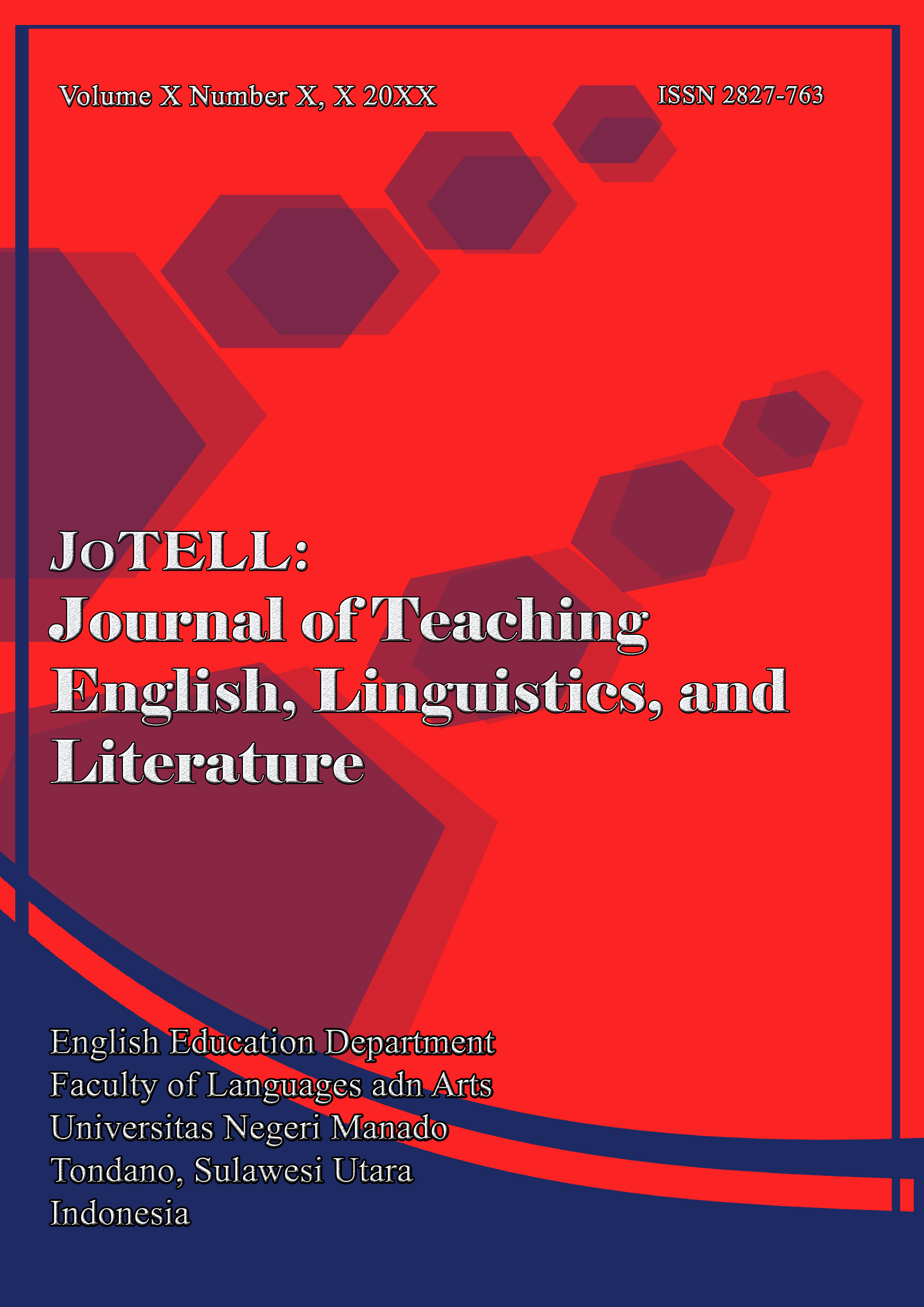THE USE OF SMALL GROUP DISCUSSION TECHNIQUE TO IMPROVE STUDENTS' READING COMPREHENSION
DOI:
https://doi.org/10.36582/jotell.v1i6.4214Keywords:
Reading, Comprehension, Small Group Discussion. ImprovingAbstract
The purpose of this study was to find out whether the use of Small Group Discussion Technique is able to improve students’ Reading Comprehension. The students at SMP Anugerah Tondano in academic year 2021/2022 were chosen as the subject of this study, specified to the eighth grade that consisted 14 students. This research used pre-experimental design with one group pre-test and post-test. This study consisted in five meetings. First the researcher gave a pretest second, treatment and the last posttest. The technique in collecting data used test as instrument in form of multiple choice test consisted with 10 numbers. The result of this study found that the use of Small Group Discussion was effective in improving students’ Reading Comprehension where post-test was higher than pre-test. The mean score pre-test was 4,14 and the mean score of post-test was 6.64. It can be stated that the use of Small Group Discussion is considered effective to improve students’ Reading Comprehension.
References
Brown, G and Atkins, M. 1988. Effective Teaching in Higher Education. London: Routledge.
Hatch and Farhady. 1982. Research Design and Statistics for Applied Linguistics. Los Angeles: University of California.
Finnochiaro, N and Bonomo.1973. English as a Second Foreign Language. New York. Mc Graw Hill Book Co.
Karisi, Y., Pelenkahu, N., & Maru, M. G. (2021). Students’perception Of The Use Of Students tube In Translation Class. SoCul: International Journal of Research in Social Cultural Issues, 1(2), 126-138.
Kenz, M. A and Greg, J.B. 2000. Effectiveness in Theory and Practice. Massachusetts: A Person Education Company.
Moore, Gray W. 1983. Developing and Evaluating Education Research. Boston: Macmillan Heineman
Smith and Robinson, 1980. Efficient Reading a Partial Guide to Reading Comprehension Exercise. New York: Cambirdge University Press.
Stevans, P. 1977. New Orientation in Teaching of English. Oxford: Oxford University Press.
Lendo, N., Liando, N., & Olii, S. (2021). An Analysis Of Readability Of Reading Texts On English National Examination On Junior High School. Journal of English Culture, Language, Literature and Education, 9(2), 128-143.
Lengkoan, F., Andries, F. A., & Tatipang, D. P. (2022). A Study On Listening Problems Faced By Students Of Higher Education. Globish: An English-Indonesian Journal for English, Education, and Culture, 11(1), 41-50.
Lengkoan, F., & Hampp, P. L. (2022). Imitation Technique In Learning English At English Education Department Universitas Negeri Manado. Jurnal Pendidikan Bahasa Inggris Indonesia, 10(1), 48-53.
Liando, N. (2012). Factors Affecting a Successful Language Learner. Indonesian JELT, 8(1), 22–50.
Liando, N. V., Pelenkahu, N., & Mongkaren, S. (2021). Students and Parents’ Perceptions toward English Online Learning during Corona Virus Pandemic. Jurnal Pendidikan Bahasa Inggris undiksha, 9(1), 91-97.
Paranduk, R., Rombepajung, P., & Karisi, Y. (2021). Enhancing Students’speaking Skill In Facing The Revolution Era 4.0. Journal of English Culture, Language, Literature and Education, 9(2), 103-116.
Tatipang, D., Oroh, E. Z., & Liando, N. V. (2021). The Application Of Mind Mapping Technique To Increase Students’reading Comprehension At The Seventh Grade Of Smp. KOMPETENSI: Jurnal Bahasa dan Seni, 1(03), 389-397.
Tumbal, S., Liando, N. V., & Olii, S. T. (2021). Students’perceptions Toward The Use Of Google Translate In Translating. Kompetensi: Jurnal Bahasa dan Seni, 1(02), 313-320.












